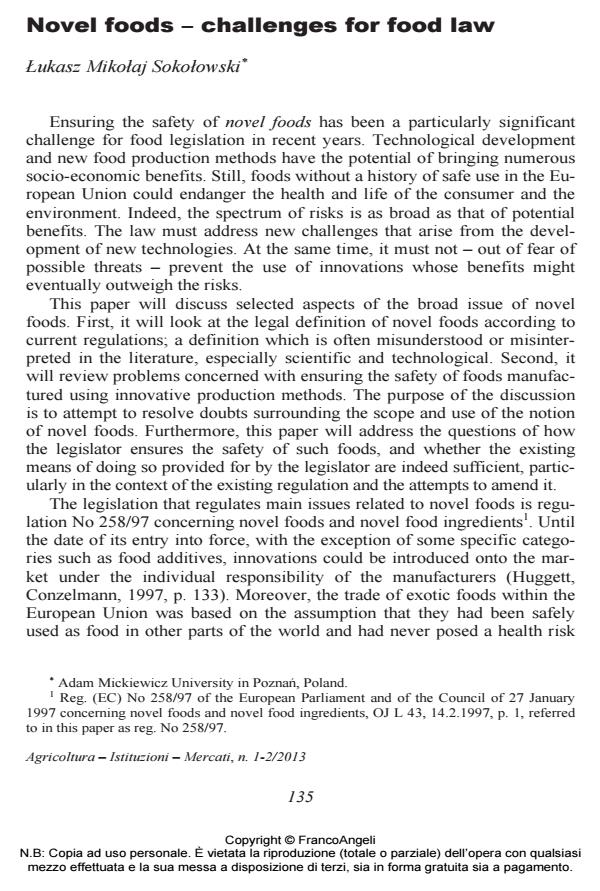Novel foods - challenges for food law
Journal title AGRICOLTURA ISTITUZIONI MERCATI
Author/s Lukasz Mikolaj Sokolowski
Publishing Year 2015 Issue 2013/1-2
Language Italian Pages 10 P. 135-144 File size 88 KB
DOI 10.3280/AIM2013-001008
DOI is like a bar code for intellectual property: to have more infomation
click here
Below, you can see the article first page
If you want to buy this article in PDF format, you can do it, following the instructions to buy download credits

FrancoAngeli is member of Publishers International Linking Association, Inc (PILA), a not-for-profit association which run the CrossRef service enabling links to and from online scholarly content.
This paper discusses selected aspects of the broad issue of novel foods. It focuses on the legal definition of novel foods and problems concerned with ensuring the safety of foods manufactured using innovative production methods. The purpose of the discussion is to attempt to resolve doubts surrounding the scope and use of the notion of novel foods. This paper also addresses the questions of how the legislator ensures the safety of such foods, and whether the existing means of doing so provided for by the legislator are indeed sufficient. The regulation in force should be open to technological developments and the use of new production methods. Although regulation 258/97 remains in force, the need for an amendment is more and more often emphasised in the doctrine. Any discrepancies between the law and the technological development would not be desirable for many reasons, including socio-economic issues. Indeed, what matters the most is that the legal instruments ensuring the safety of novel foods protect the consumer, the environment and biodiversity in the best and most effective way possible. Parole chiave: novel foods, sicurezza alimentare, nuove tecnologie.
Keywords: Novel Foods, Food Security, New Technologies.
Lukasz Mikolaj Sokolowski, Novel foods - challenges for food law in "AGRICOLTURA ISTITUZIONI MERCATI " 1-2/2013, pp 135-144, DOI: 10.3280/AIM2013-001008